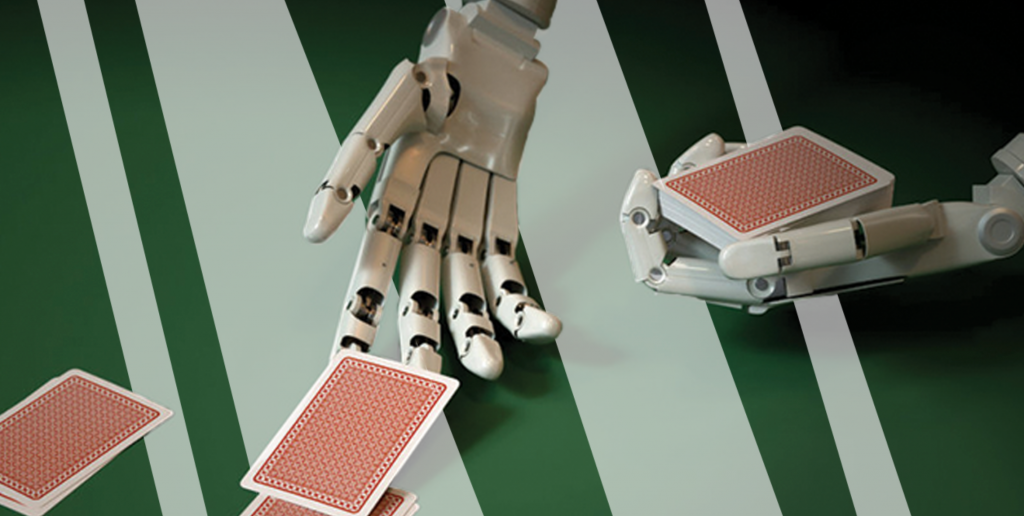
This time, we will look at a slightly different paper, where the authors are trying to develop rules for poker using deep-learning algorithms. After playing the artificial intelligence game Claudico and Libratus, it was discovered that the strongest part of the game is the solution to river situations. The authors of this paper aim to analyse the decisions made by the programs in river and to create understandable rules.
For this experiment, two identical artificial intelligences were written, with no predefined rules other than an understanding of the strength of the card. Such conditions allow new ways of solving poker situations to be discovered, as they do not involve the knowledge of regular players. The programs themselves learned only from each other by playing 100 000 Heads-Up No-Limit games.
It is true that the authors have limited the possibilities of the game to some extent, so the conclusions should be taken with a grain of salt. Additional limitations of the game were as follows:
- Hands are analysed according to their own and their opponent's strength in river situations in terms of percentage (i.e. how much of the opponent's range is overtaken).
- Only river situations are addressed. This restriction does not change much about the first restriction.
- Only check/call and check/fold are analysed. Probably the most changing constraint, as donk and raise situations are excluded.
- Played with a rotating deck of 10 cards. This restriction does not change anything in principle with respect to the second and first restriction, but only reduces the decision tree.
- Analysis of the in position game.
After 100,000 simulations, the learned game was observed and presented in a complex decision tree:

The authors derive two basic rules from the AI game:
- If the river hand beats an opponent's hand between 20% and 80%, a check back or small sizing is usually made.
- If the river hand beats 95% of the opponent's hands and the opponent has at least 10% of very strong hands, the player is all-in.
These rules are more suited to a shortstacked game, but the idea can be maintained. Taking thin value in the river often won't bring much profit because of the possibility of being beaten. Whereas when you have at least the second strongest hand in the river and your opponent has strong hands in your range in this situation, you can either bet more than the pot or go all-in. Of course, in games with more than 50 BB stacks, you often won't have to go all-in.
A few side points from the decision tree - AI almost never goes into a showdown (necheckbackina) if their hand is not touching the 16% opponent's hand. Usually it will just be weak high cards. In that case they will bet at least half the pot. In other situations, the AI chooses a very strongly varying bet sizing. One other commonality only comes from a strong value game - if there is a strong hand, there is almost always at least pot bet sizing.
Of course, there are many limitations to AI, so these rules should not be taken lightly. In most cases, we will be playing against weaker or medium-strength regular players, not against super-GTO top-level poker masters. These rules should be kept in mind, but remember that exploitative play will always bring more profit.





